The Back-To-Basics-Watch of Roger Dubuis, the Hommage La Placide
Finally looking back at its roots, Roger Dubuis whets our appetite and makes us wish for more!
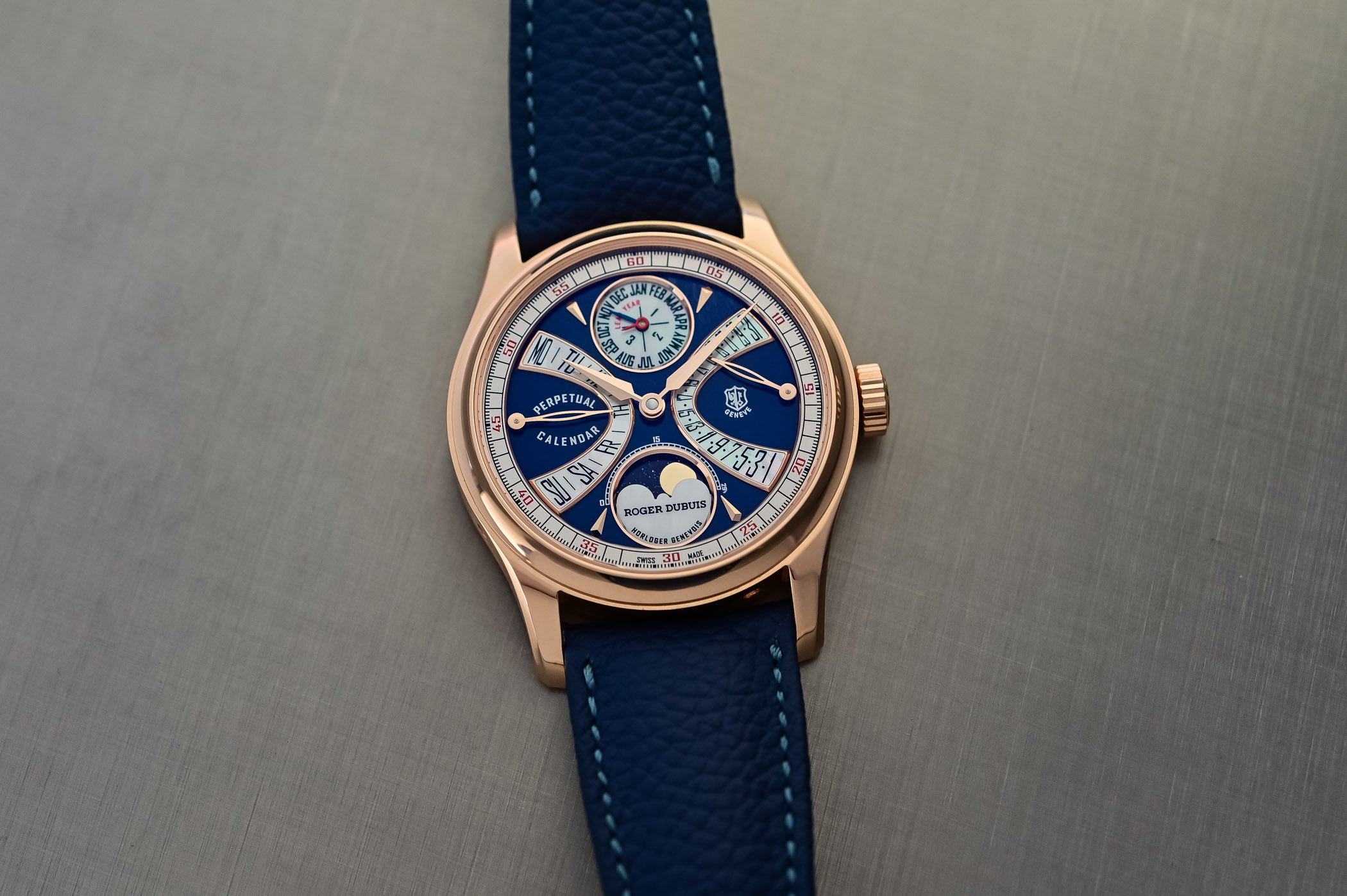
Roger Dubuis is a name that can be seen from different angles. It is one of these names that feels twofold in the collecting community. One side of the name refers to the man himself, a talented watchmaker who, back in the 1990s, created his eponymous independent brand, with early-production watches becoming highly collectable youngtimer timepieces. The other side of the Roger Dubuis, the one that probably speaks to a wider audience, is a brand owned by the Richemont Group, creating bold, contemporary, high-end watches with a strong focus on architectural movements. And in the small circle of collecting snobs and press members, the first angle is the one that gets most of our attention. And it’s not without a certain enthusiasm that I’m now about to explain everything about the Hommage La Placide Perpetual Calendar, a back-to-basics watch, elegant and refined, compact and classic, yet paying a strong tribute to the early days of Roger Dubuis.
Roger Dubuis, watchmaker, brand founder
Born in 1938 in Corsier-sur-Vevey, near the shores of Lake Geneva, Roger Dubuis’ life has been dedicated to watches. His career as a watchmaker started in the late 1950s at Longines, where he spent 9 years of his life. There, Dubuis worked in the after-sales department, mostly on the restoration and repair of chronographs. From Saint-Imier, Mr Dubuis then moved back to Geneva to work for Patek Philippe as a constructor and watchmaker in the high complications workshop. There, alongside another great name, Svend Andersen (who later created Andersen Genève), he worked mostly on minute repeaters and perpetual calendars.
After about 14 years working at the renowned Genevan manufacture, Roger Dubuis left and, in 1980, created his own workshop to restore and repair watches and clocks for collectors, auction houses, and watch brands, extending his list of clients beyond just those of Patek Philippe. But that was just the beginning of the story. Dubuis wanted more and started working on the development of movements and modules, starting with his own take on a praised complication, the perpetual calendar, to be fitted atop a Lemania movement – not much different from what Patek Philippe was doing back then with the 2499 series of Perpetual Calendar Chronograph watches. However, Dubuis, together with a young Jean-Marc Wiederrecht (founder of Agenhor, now owned by MELB Group), developed a double retrograde perpetual calendar module, which would be fitted in 1989 in a Harry Winston watch – but more on that later.
Shortly after, Roger Dubuis met Carlos Dias, a businessman and watch designer who encouraged the talented and discreet watchmaker to start his own watch brand. Together, Dubuis and Dias set up Société Genevoise des Montres (SOGEM) in 1995, which was later known as the brand Roger Dubuis. The first watches to leave the atelier were, undoubtedly, vastly influenced by Dubuis’s past experiences at Longines and Patek Philippe. Classic chronographs, finely decorated Lemania movements, traditionally crafted dials… These watches had it all and were immediately praised by seasoned collectors.
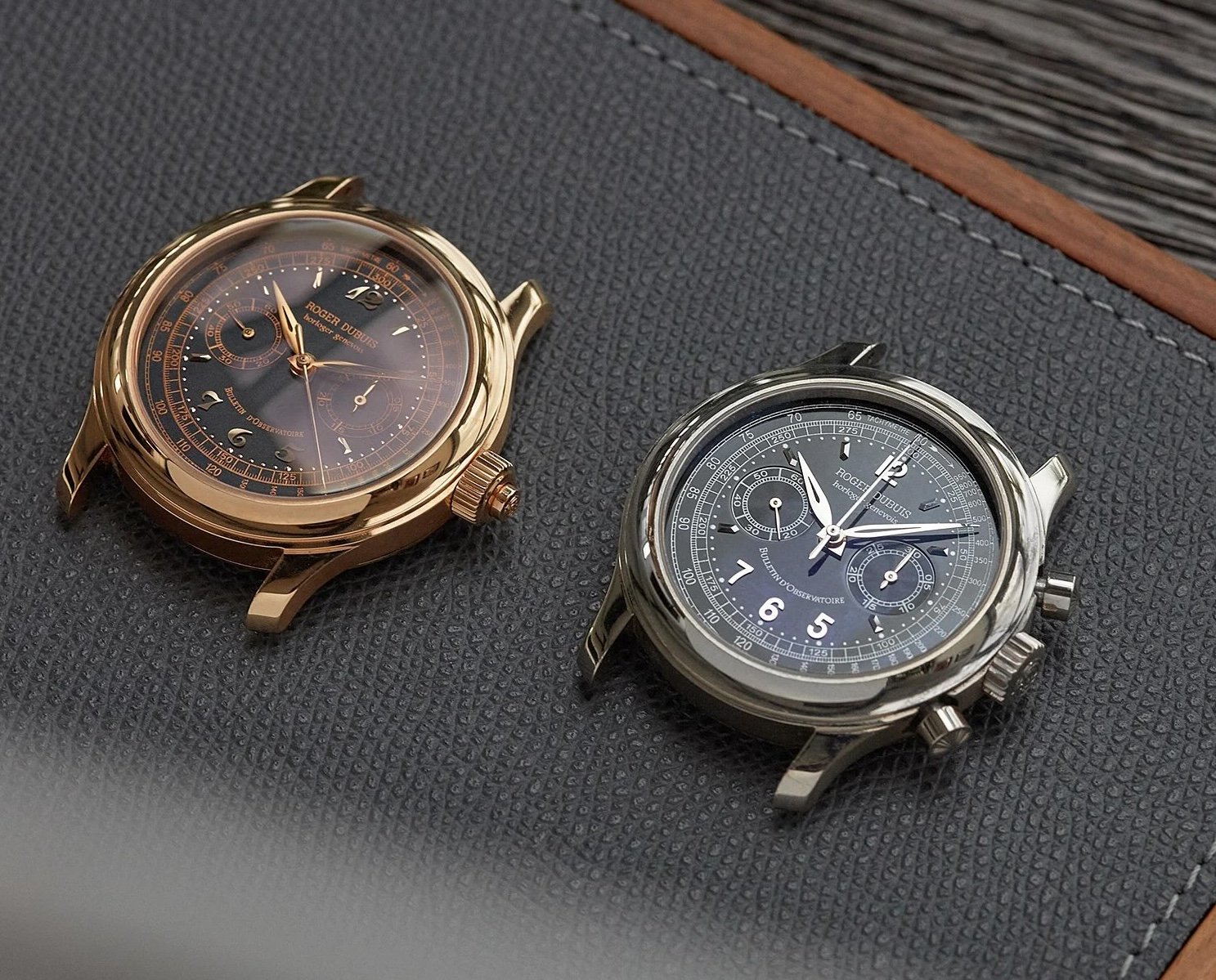
From the early days of the company, two lines of watches were created: the classic, discreet and round Hommage and the much bolder Sympathie, a cushion case with pointy edges that later became a signature for the brand. The quintessential watch of Roger Dubuis, which is still to this day regarded as the most collectable watch the man has ever crafted, is the Hommage Chronograph, based on the legendary Lemania 2310 movement, which was also used by Patek Philippe at the time as the base for its Perpetual Calendar Chronograph reference 3970 and later the reference 5070 – the final Patek Philippe chronograph to utilize a Lemania ébauche.
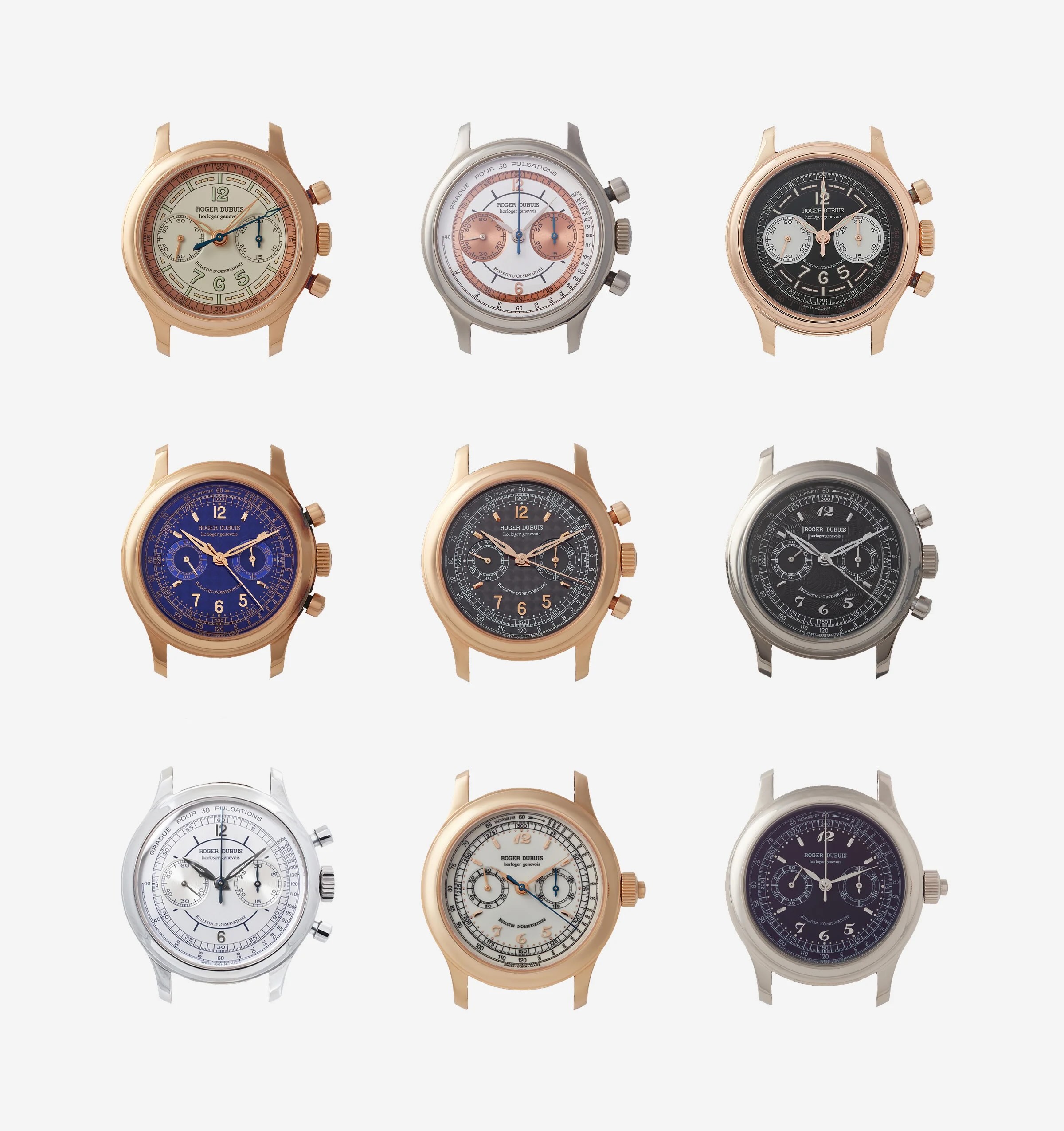
The early chronographs of Roger Dubuis were among the finest watches available at the time on the market, with a strong focus on decoration and accuracy, with every piece produced bearing the Geneva Seal and being certified by the Besançon Observatory. These inaugural watches, most likely delivered in 1996, and stamped “horloger genevois” on the dial, had the clear intention to rival equivalent offerings from Patek, and were targeted to the same collecting audience by proposing watches within the same spirit as the references 130 and 1463 Tasti Tondi hand-wound chronographs. Cases were either 34, 37 or 40mm, exclusively in precious metals, either in classic two-pusher or monopusher configurations. Sector dials, guilloché patterns, salmon colour or Breguet numerals, there’s been a multitude of configurations available, but all with the same overall spirit.
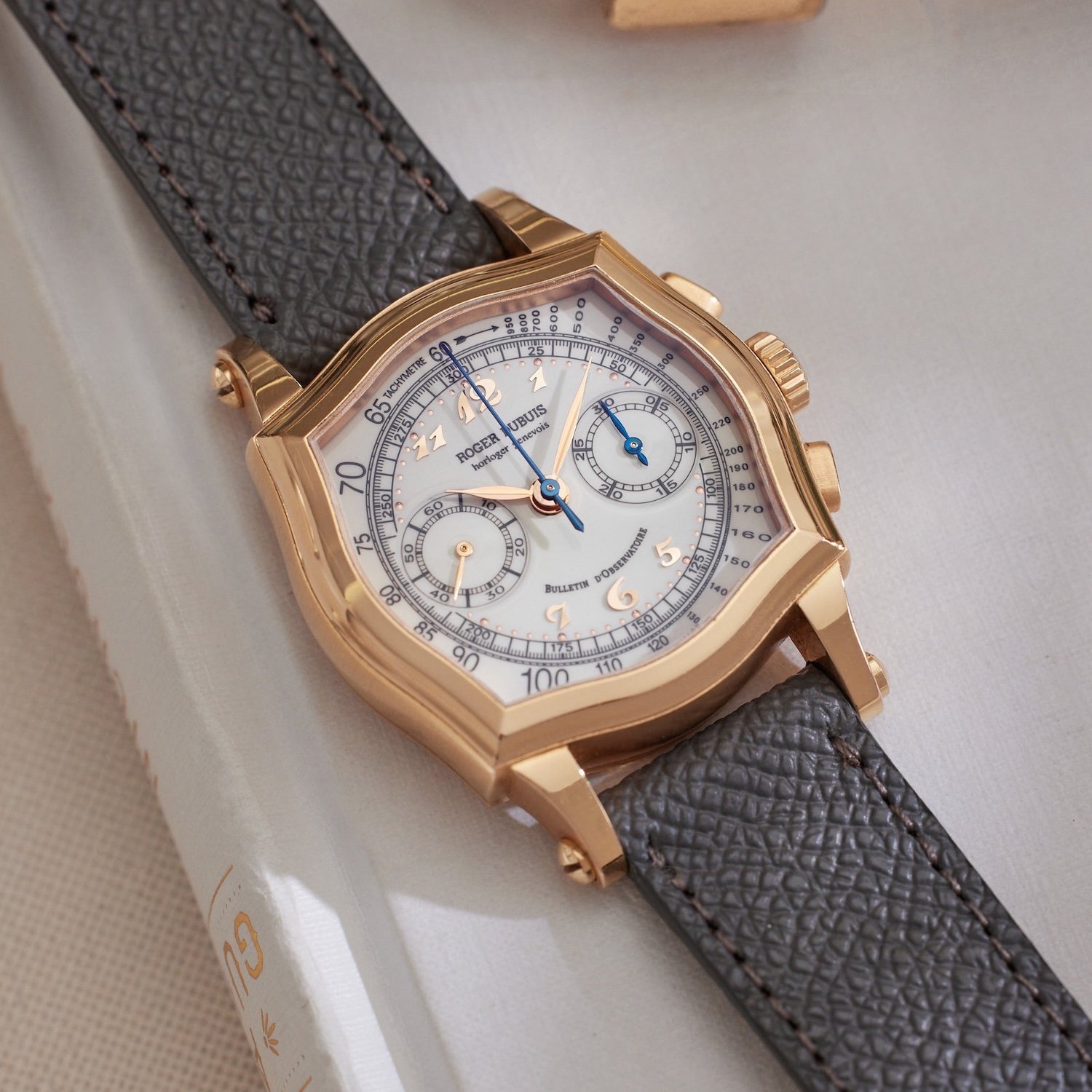
The Sympathie chronograph was technically speaking identical, however, with a much more personal approach to case design, with a pointy cushion shape and elongated lugs, giving it a unique silhouette. Again, different sizes (34 and 37mm) were available, as well as different alloys of gold and various dial configurations (very often with Breguet numerals). These two chronograph collections are, today, what the collecting community sees as the quintessential watches of the era under the direct control of Roger Dubuis. There is, however, more to it, as we’ll see in a bit.

In 2001, following a rapid (too rapid, some say) growth, the brand built a large manufacture in Meyrin, near Geneva (where the brand still operates) with the idea to create in-house movements. By the time Roger Dubuis left the company and retired, in 2003 at the age of 65, the brand had already undergone a transformation in style, as the watches became bigger and much more flamboyant, following Carlos Dias’ ideas. By 2008, the company boasted close to 30 in-house calibres, from double tourbillons and powerful chronographs, yet the recession hit Manufacture Roger Dubuis quite severely, adding to the debts of the company. This is when Mr Dias sold 60% of the company to Richemont, with the 40% remaining acquired in 2016. The rest is the brand we know today, with the Excalibur collection for most of it.
The story of the Bi-Retrograde Perpetual Calendar
As said above, the work of Mr Roger Dubuis is often (too often, should I say) seen as a strong focus on chronograph watches. Rightfully so, to a certain extent, but not only. There’s more to the man than these Lemania-based H34, H37 and H40 watches. One of the most recognisable watches of Roger Dubuis has actually not much to do with his past position at Patek Philippe, and saw the light of day during his transition from Patek to making his own brand, when the man was working solo in his restoration and repair workshop. This was the time when the double-retrograde or Bi-Retrograde perpetual calendar watch was conceived.
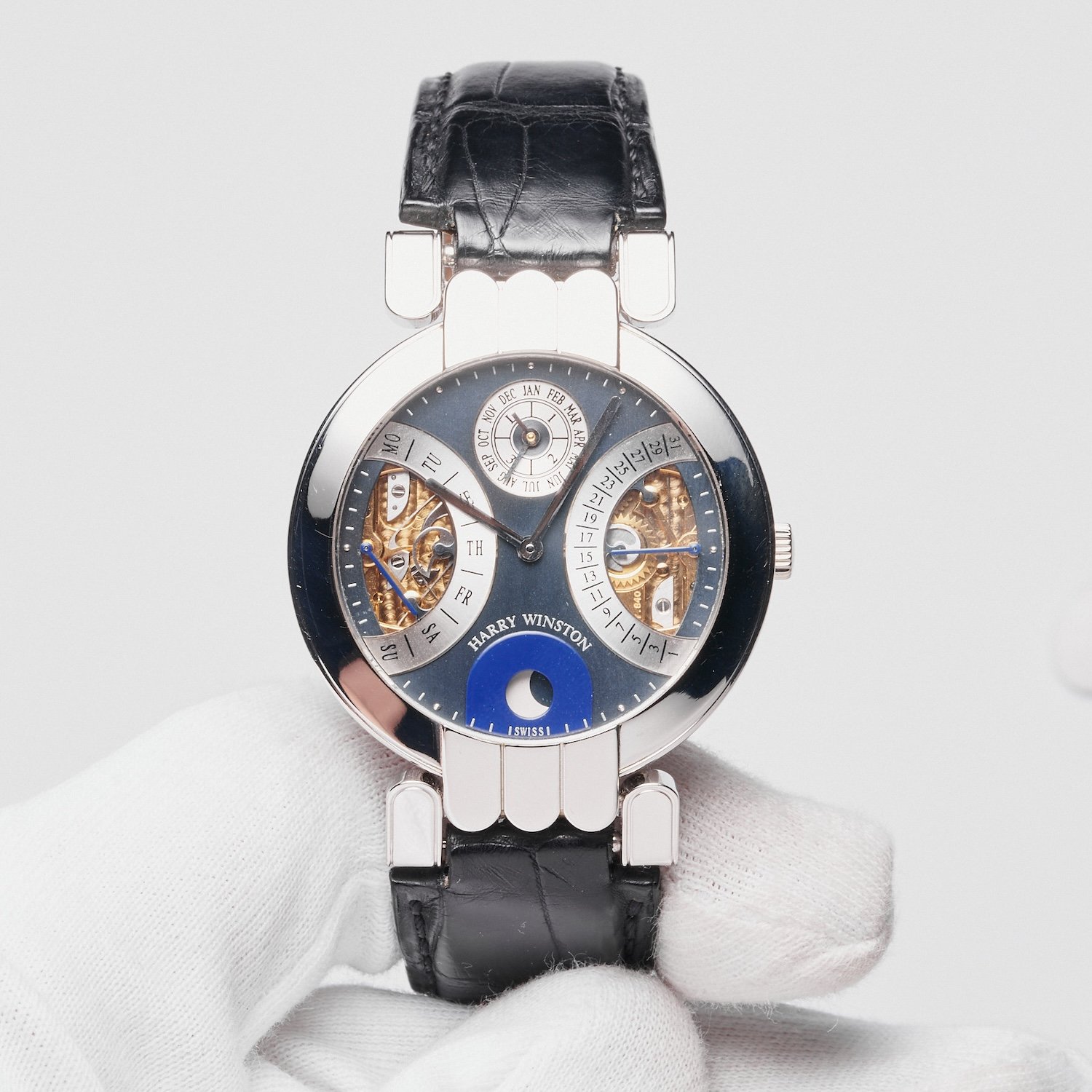
As we mentioned above, the first-ever module and complication developed by the man was the result of a collaboration with Jean-Marc Wiederrecht, who is today known as the head of complication specialist Agenhor, responsible for the Le Temps Suspendu module for Hermès or the high-tech Agengraph chronograph movement. The module was developed for Harry Winston, the brand releasing its own version of the bi-retrograde perpetual calendar at Baselworld in 1989. This display was a first for a wristwatch. These modules were fitted on top of either a GP3100 or Frédéric Piguet 71 base movement, and displayed the day (at 9 o’clock) and the date (at 3 o’clock) on semi-circular arches, with a retrograde hand, paired with a month/leap year sub-counter at 12 o’clock and a moon phase at 6 o’clock – and often, the inner part of the retrograde part was opened to reveal the mechanism, in particular the snail-shaped wheels.

Alongside classic chronograph movement, both the Hommage and Sympathie collections quickly started to house perpetual calendars, on top of a time-only or a chronograph movement (the combination is rare but does exist). These watches were using a module developed on the basis of what Dubuis and Wiederrecht created for Winston, with the classic Bi-Retrograde display that we now immediately associate with the brand. For early models, the Piguet movement used with Winston was replaced by a Longines L990. But what matters most is that this module is now back, with the new Hommage La Placide Perpetual Calendar.
The unexpectedly classic Hommage La Placide
Here we are in 2025, and most, if not all, new Roger Dubuis watches available from the brand are based on the Excalibur concept, either in classic form or in sporty Spider shape. Flamboyant, sharp and bold, these watches are technically impressive for sure, but rather far from the original spirit of Roger Dubuis with his Hommage and Sympathie collections. But, in an unexpected move, the brand has launched the Hommage La Placide Perpetual Calendar, a modern revival, a tribute to the early days of Roger Dubuis, not only in terms of design but also mechanically, as this watch relies on in-house movements made from original and remanufactured components, using an early proprietary automatic base calibre as well as the emblematic Bi-Retrograde perpetual calendar module. And all of that in a restrained, elegant and compact Hommage case. Yes, give me more of that, please!
There is a very good reason behind the creation of this watch, and that is to celebrate the 30th anniversary of the brand. Sure, some would have loved (me included) to see a tribute to the Hommage Chronograph, but sourcing these hand-wound Lemania 2310 base calibres isn’t a walk in the park. In the same vein, conceiving a replacement movement from scratch is something that takes time and investment, but who knows… Maybe RD is working on such a calibre internally? I’m sure many watch collectors would appreciate this. But let’s not hide our enthusiasm here, as this Hommage La Placide is, undoubtedly, a meaningful and highly appealing watch.
The Roger Dubuis Hommage La Placide is… surprisingly classic, round, restrained, compact. No spiderweb-like bridges, no triple-lug module, no notched bezel or crazy double-tourbillon movement. It has a subtleness and elegance that have not been seen at Roger Dubuis for many years. In fact, its very name is a great way to summarise the overall spirit of this watch, as placide was Roger Dubuis’s childhood nickname, due to his calm and gentle spirit. The Hommage La Placide is a combination of the brand’s first in-house automatic movement with a classic double-retrograde QP module on top, housed in a case that’s the direct descendant of the early Hommage watches. Slightly modernised, of course, but consistent with what the brand did 30 years ago.
This watch is far more moderate and restrained, with a compact case in pink gold measuring only 38mm in diameter and 11mm in thickness. It is round, subtle and pleasantly traditional, with its smooth, polished bezel with an elegant concave profile, and lugs featuring a polished bevel. The casebands are lightly brushed for contrast, and the Placide wears exactly like you’d expect a modern dress watch to wear: short and relatively thin but with a certain contemporary confidence and presence. It’s not a formal watch per se, and both the colour combination and the casual strap make it wearable in daily conditions.
Looking at the description of the dial, you could expect something almost over-the-top. Layers, colours, textures, materials, strong identity of the display… The list is long. When we received the press release and official photos, I was a bit sceptical about the look of the watch in the metal. Wouldn’t it be too much? Well, to my surprise, there is an undeniable coherence in the way this layered and complex dial has been treated. I would even say that the mother-of-pearl elements add to the overall elegance. Who knew…?
What dominates the dial of the Hommage La Placide is, of course, the signature display of the perpetual calendar, using two retrograde indications for the day of the week and the date, as it should on a watch from Roger Dubuis. The rest is equally classic RD, with central hours and minutes, a moonphase at 6 o’clock and a month/leap year indicator at 12 o’clock. What the brand has done, however, is to add complexity and modernity through the colour combinations and textures. Early QPs used to have a flat dial (not necessarily the best in terms of legibility). Now, we start with a main plate in a rather stunning colour known as Leman Blue, a reference to Lake Geneva. The surface is lacquered and results in a rich, deep blue tonality. The dial is framed by a flange with circular brushed and rhodium coating.
White mother-of-pearl is then used to create the calendar segments, with transferred texts and hand-bevelled sides. The counters are also made in mother-of-pearl, with a broader circular brushed finish. The use of MoP, as said above, is discreet and doesn’t feel out of place in this context. It is, in normal conditions and from a certain distance, hardly noticeable. The final touch to the dial is moonphase, made with a blue aventurine base and curved 18K yellow gold moons. As with early models, the arched calendar segments are home to the perpetual calendar mention and logo of the Poinçon de Genève. There’s even the classic Horloger Genevois mention at the bottom of the dial.
This perpetual calendar display is made possible thanks to the RD72 module, which was first used in 1999. While using a known technical base, the main plate, large bridge, and 50% of the components, such as levers, springs, wheels, and pinions, had to be remanufactured. This module is here paired with the RD14 base calibre, the brand’s first in-house automatic movement (launched in 2004), becoming the calibre Hommage 1472. These older movements have been restored were given an extensive check-up, undergoing quality control tests and full diagnostics. This fine movement, with swan neck regulator and original Roger Dubuis balance springs, has been improved with a complete recalculation of the gear train for greater performance.
A newly made gold rotor winds this 4Hz movement with 48 hours of power reserve. It is certified by the current Poinçon de Genève standard (now performed on the entire watch) and features 15 decoration techniques. It’s all rather discreet, but a closer look at the movement reveals great attention to detail.
Thoughts, Availability & Price
To us, watch snobs, this Hommage La Placide perpetual calendar is probably the most appealing watch that Roger Dubuis has released in years. It certainly is a niche model that targets a small audience, but it makes quite an impact, both as a watch but also as a signal. Yes, RD is still capable of making superb classic watches with a high level of execution, on par with the greatest names in Geneva. Now, there’s one main question… Will we see more? Will Roger Dubuis relaunch a collection of Hommage watches, including the Bi-Retrograde QP, but also chronographs and observatoire time-only models? Because, in the current state of things, this highly limited edition only makes us want more… So, RD, you know what to do now.
The Roger Dubuis Hommage La Placide Perpetual Calendar is released as a limited edition of only 28 pieces (a signature limitation for the brand), and is priced at EUR 115,000 (excl. taxes) or EUR 138,000 (incl. 20% VAT). For more details, please visit www.rogerdubuis.com.




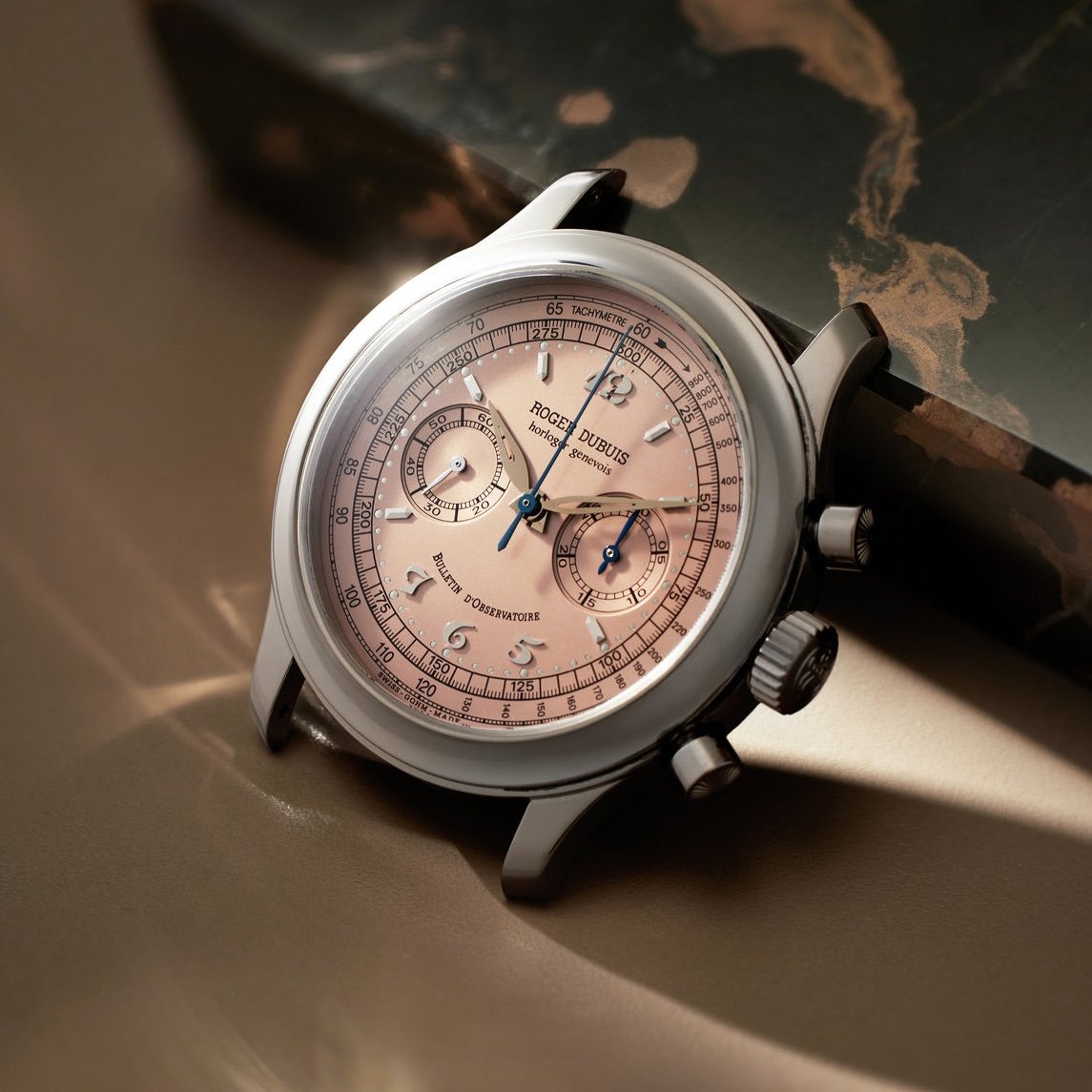




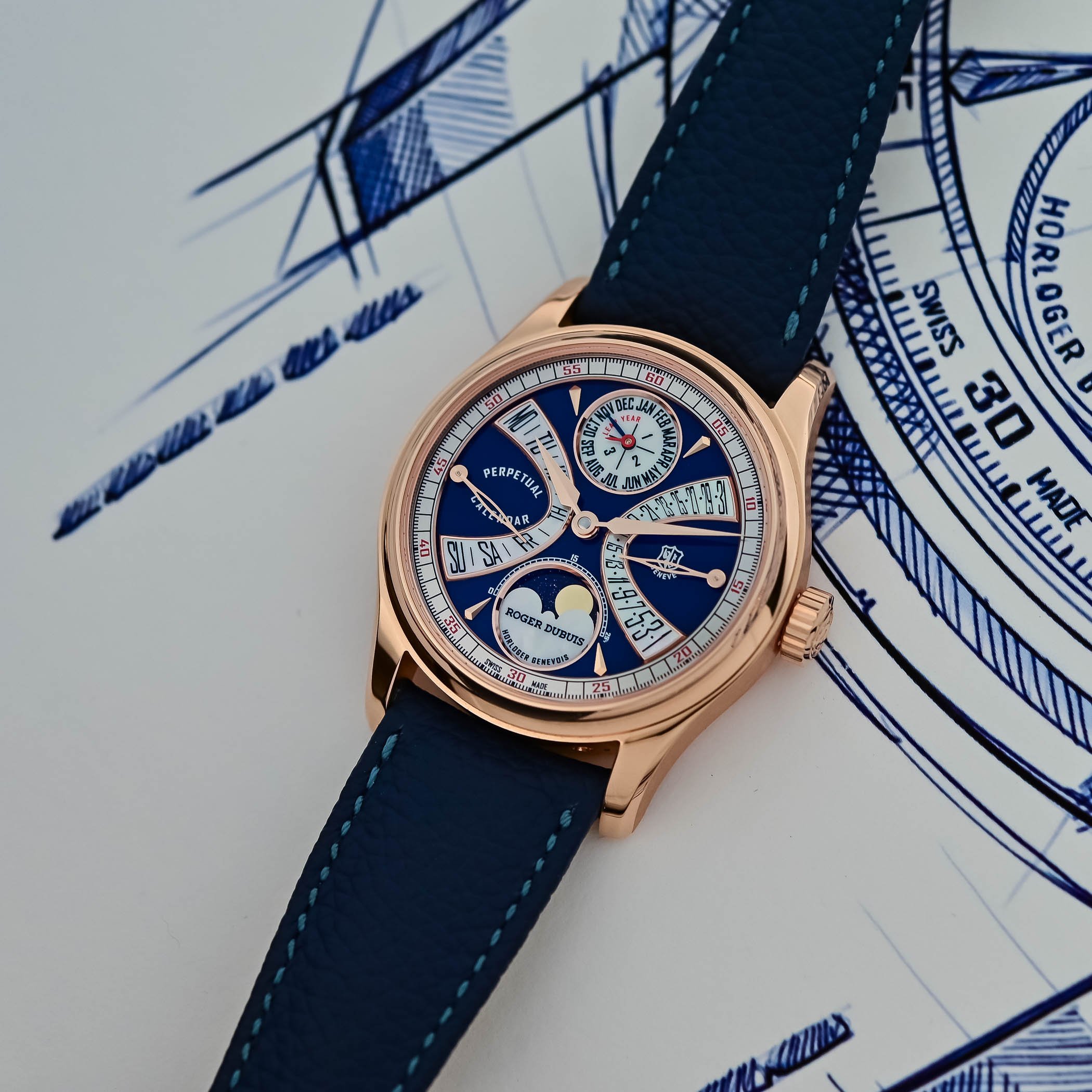
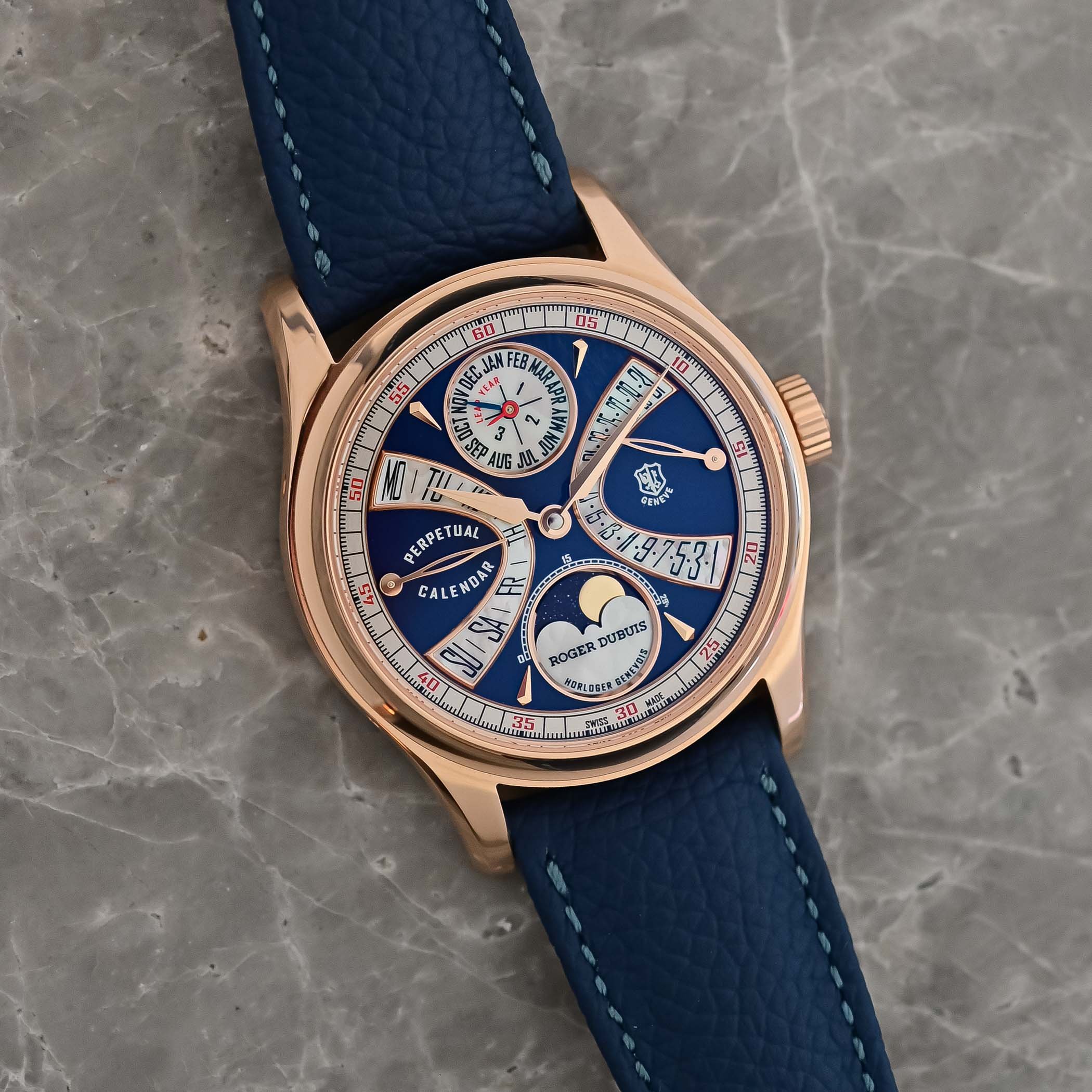
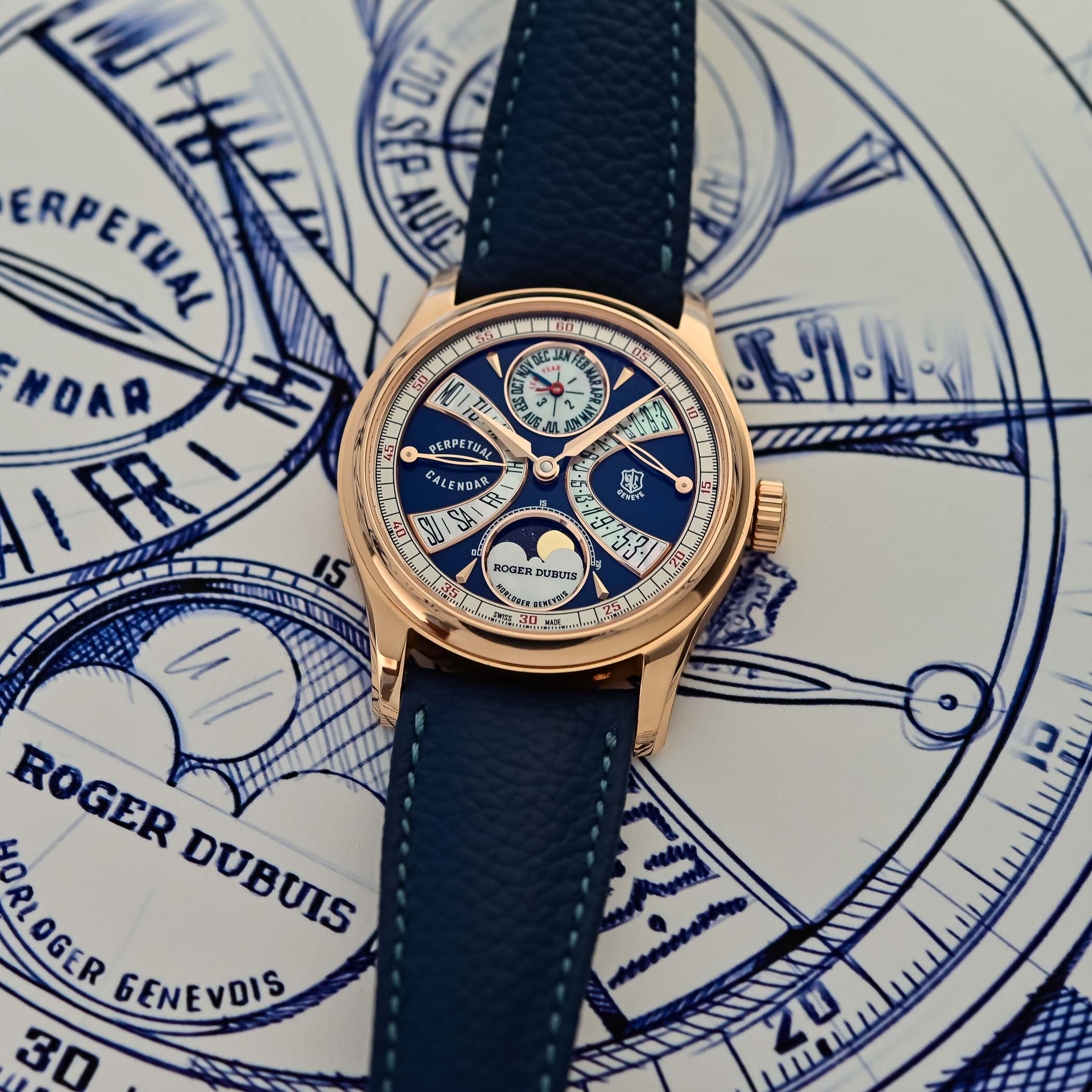

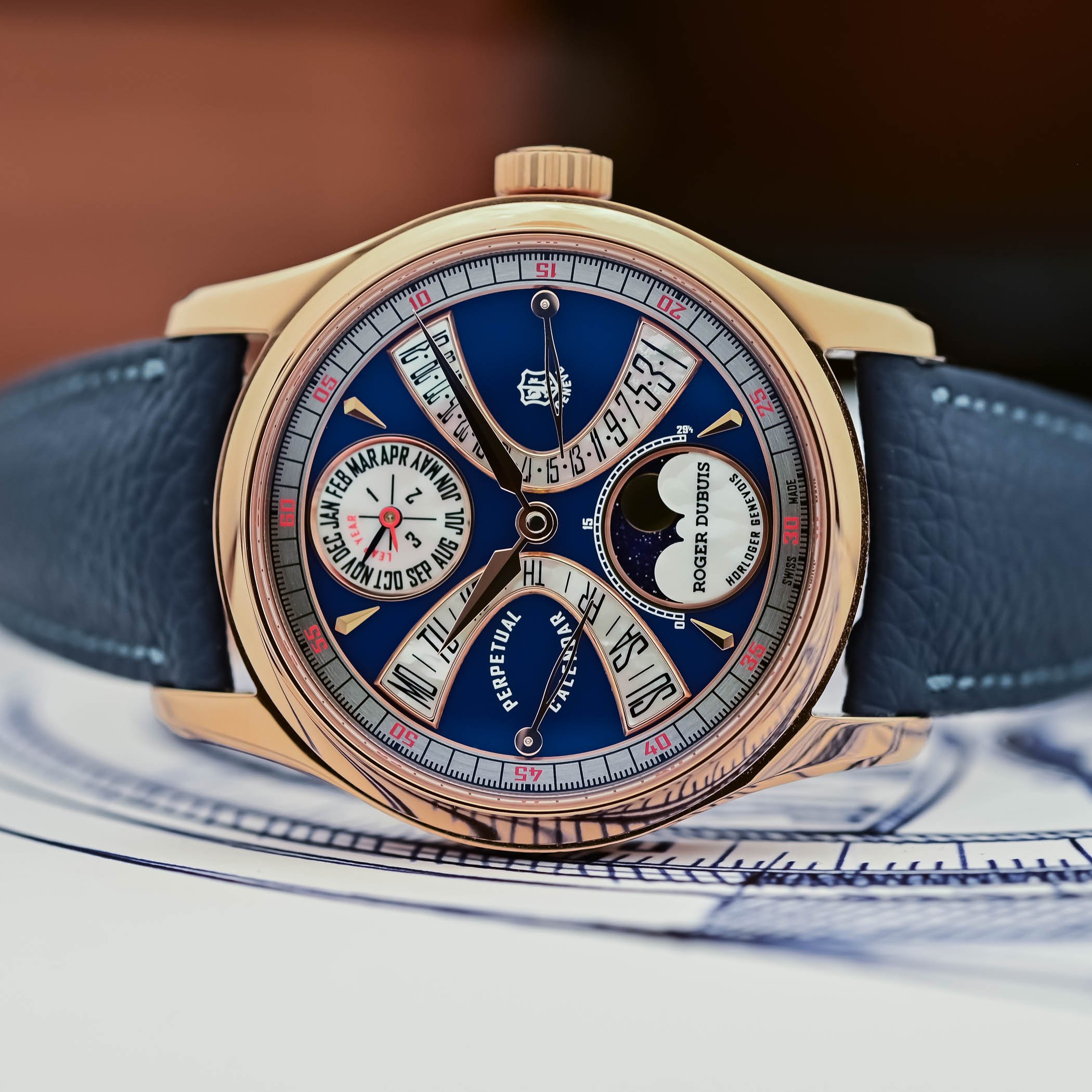
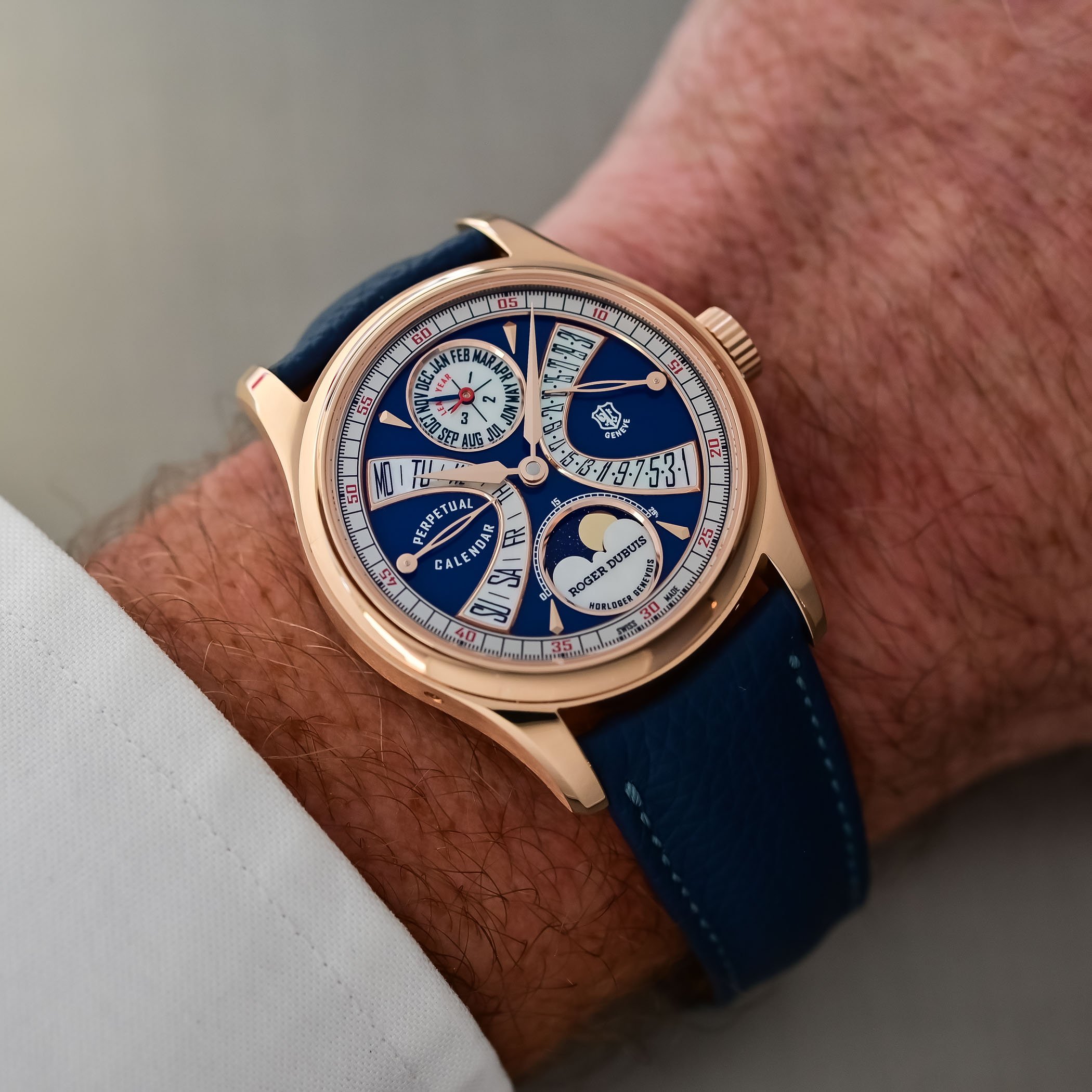
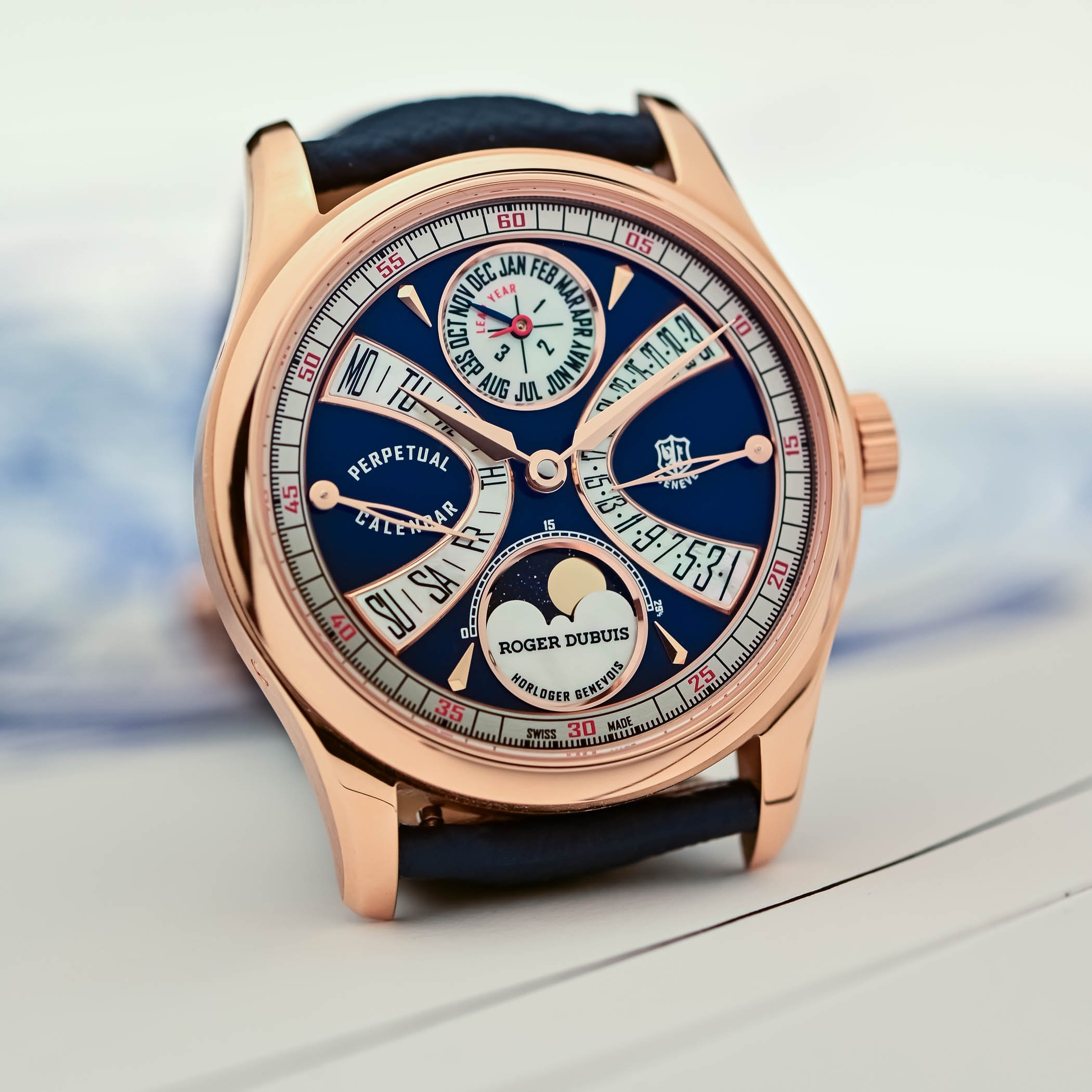
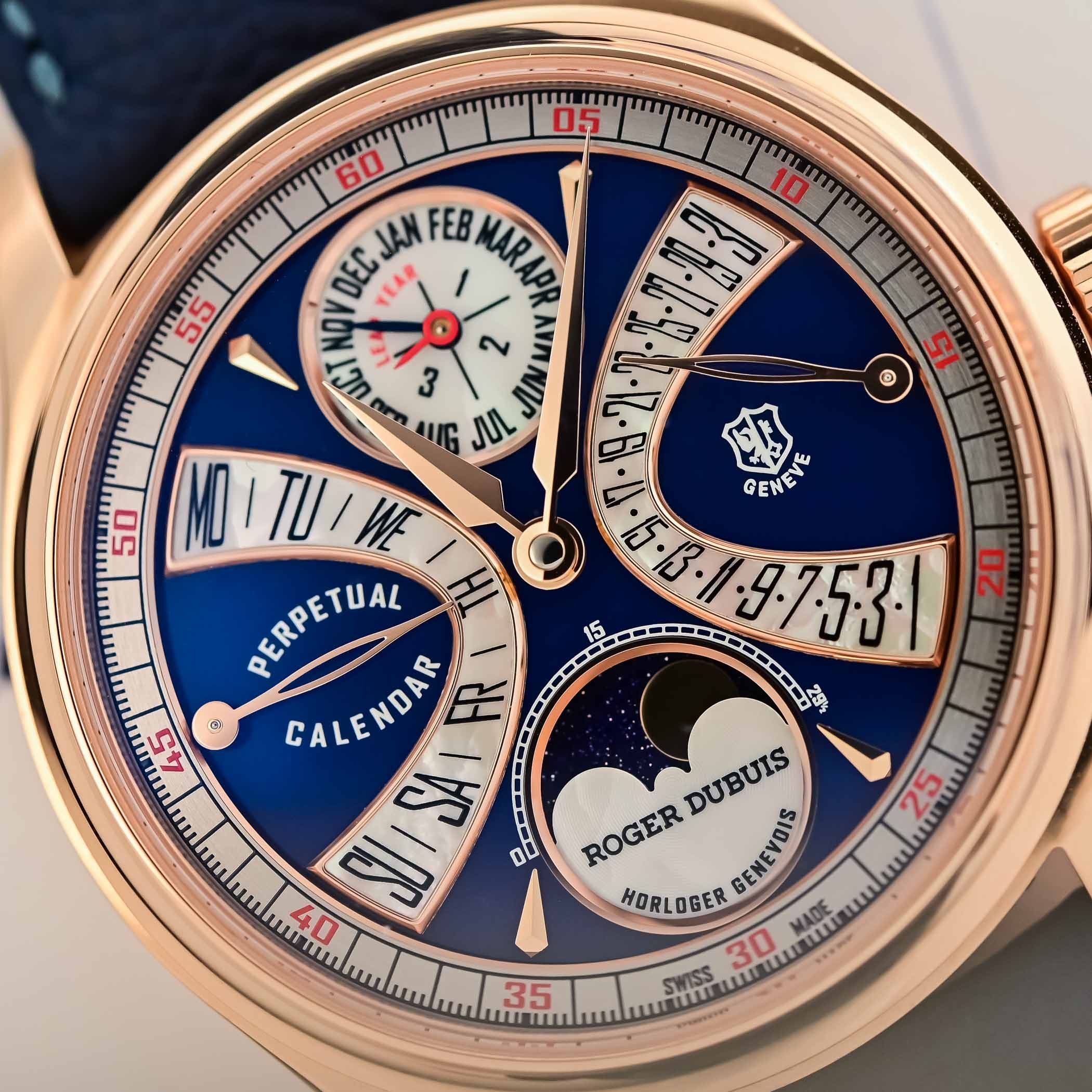



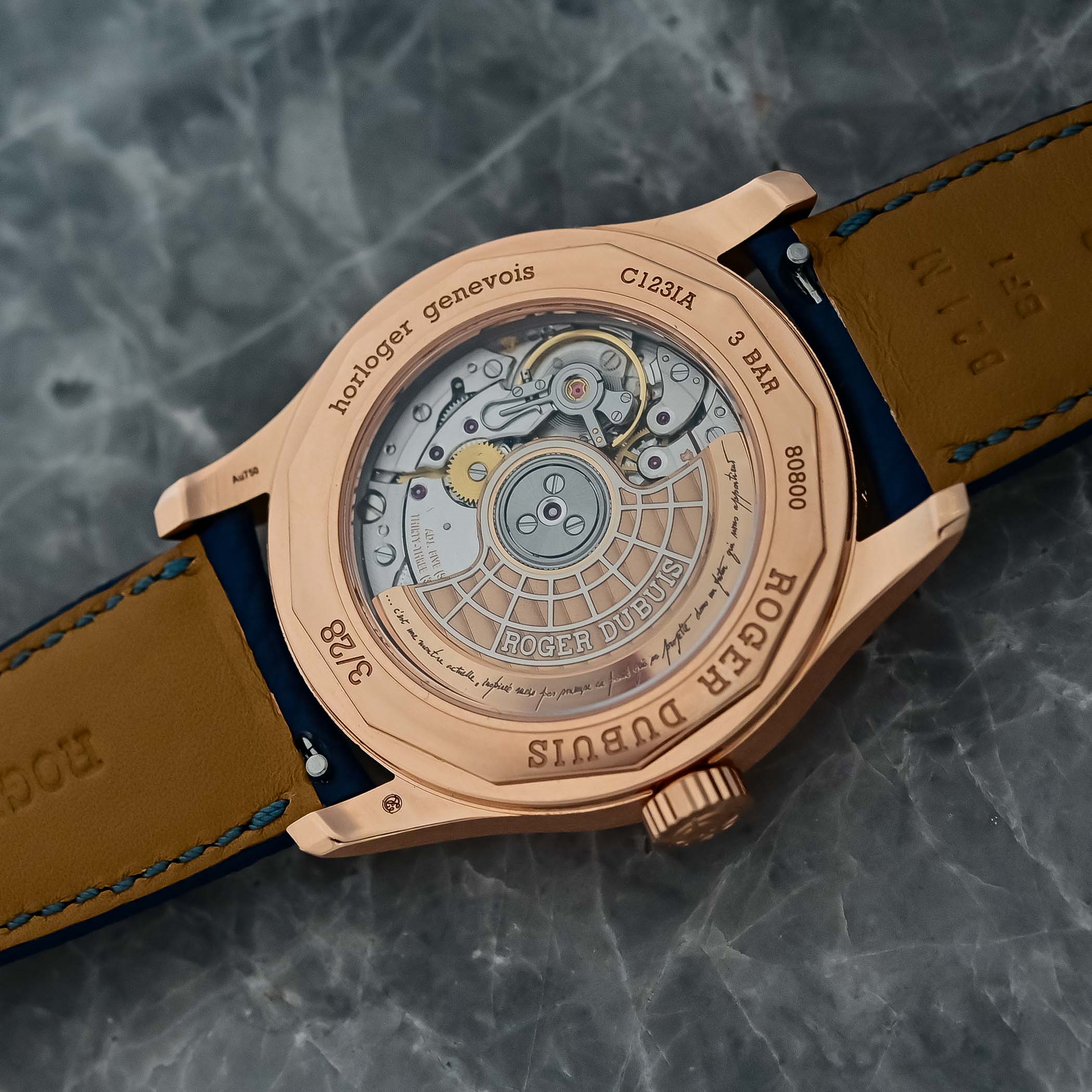
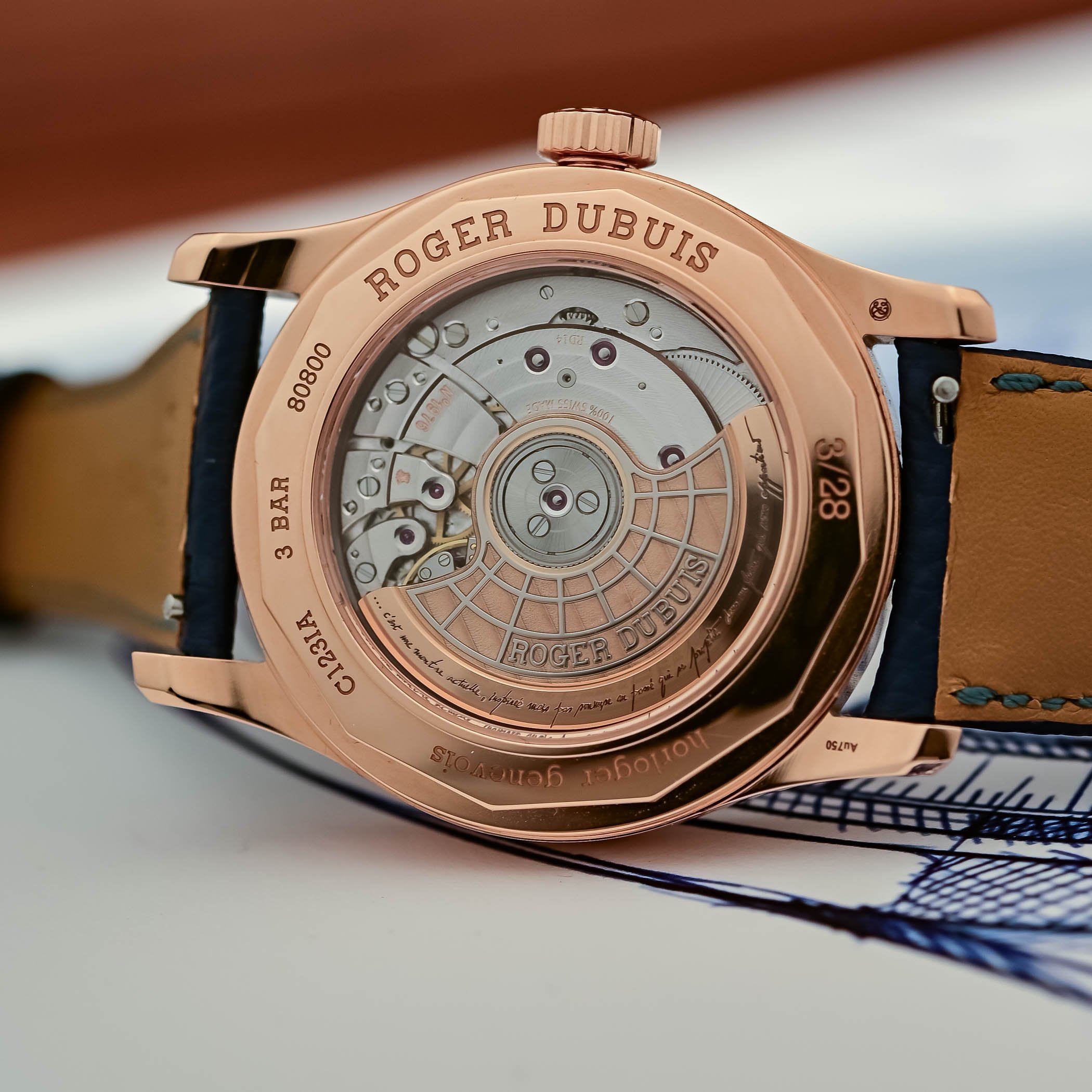
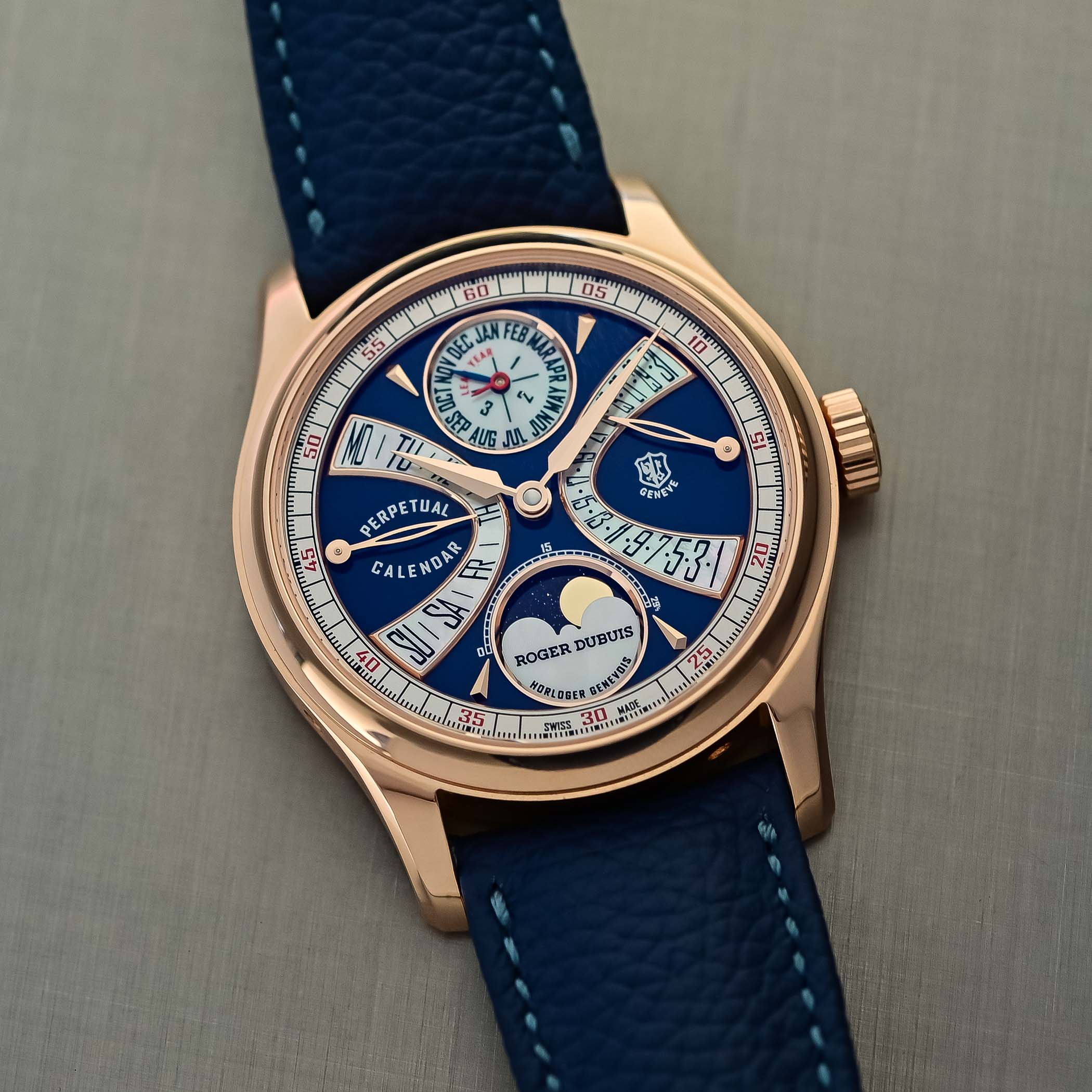
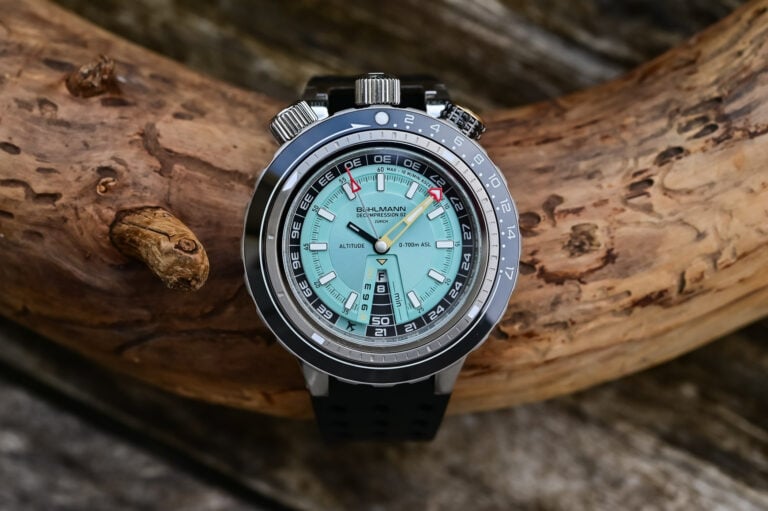
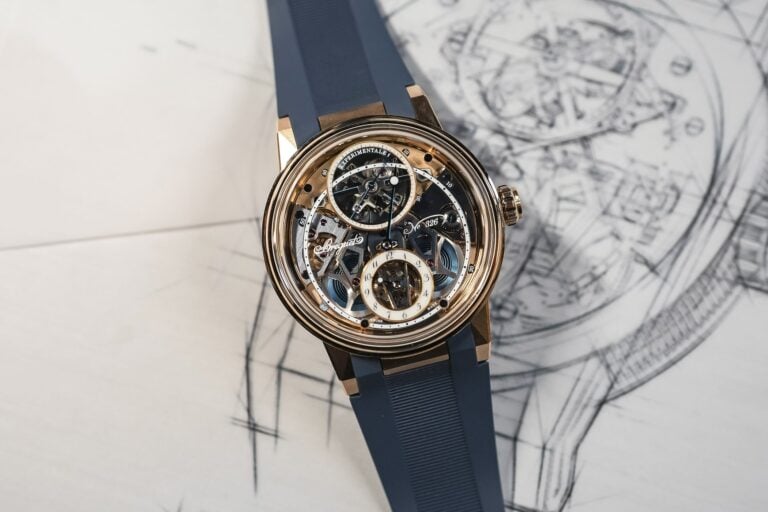
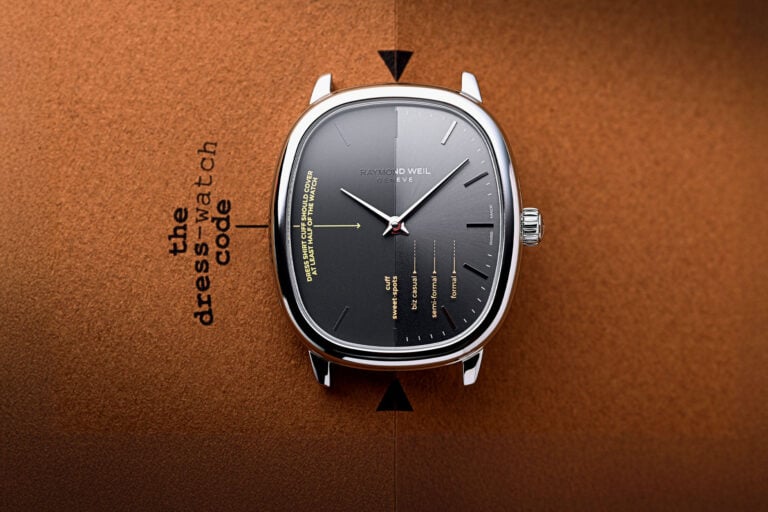
2 responses
Even the finish of the movement looks rather basic.
You guys only mention the diameter and thickness of the watch in all your reviews . What about the lug to lug and lug width , that’s equally important for most watch enthusiasts for understanding the dimensions of the watch while looking at it online !